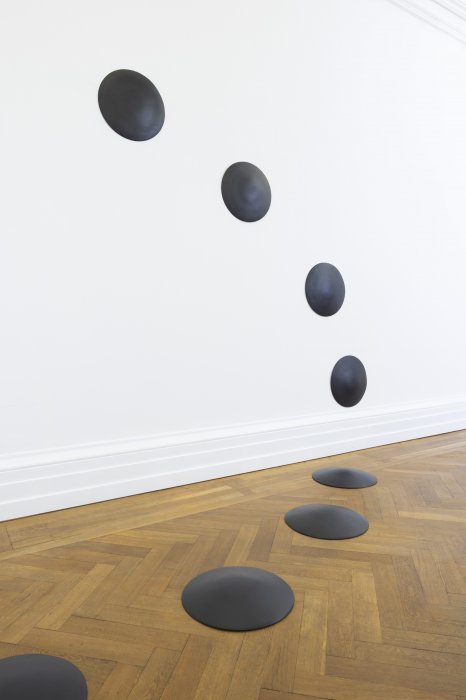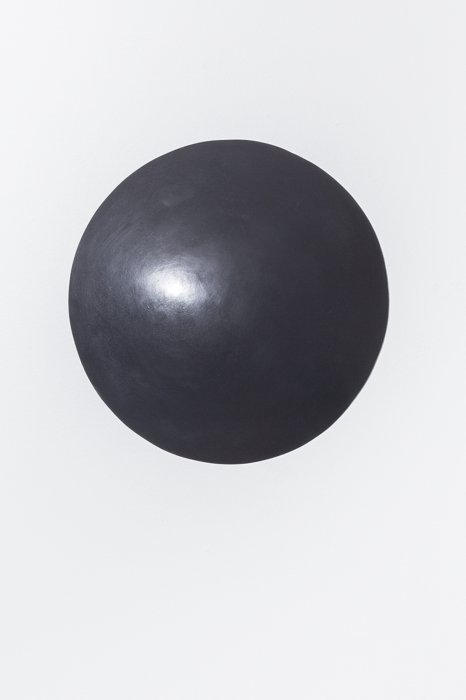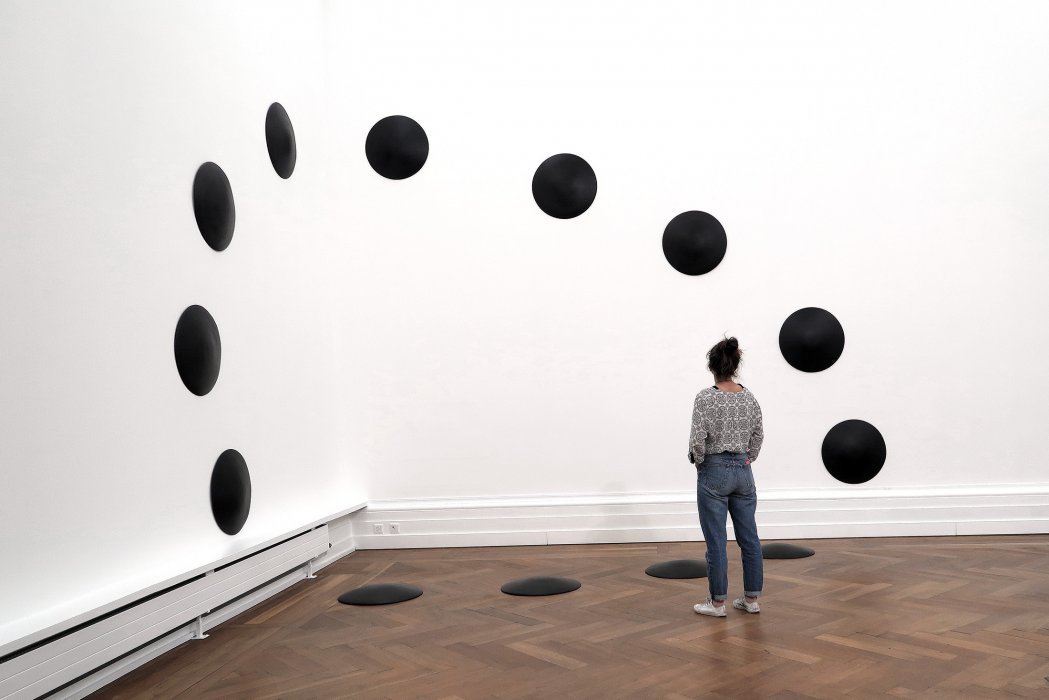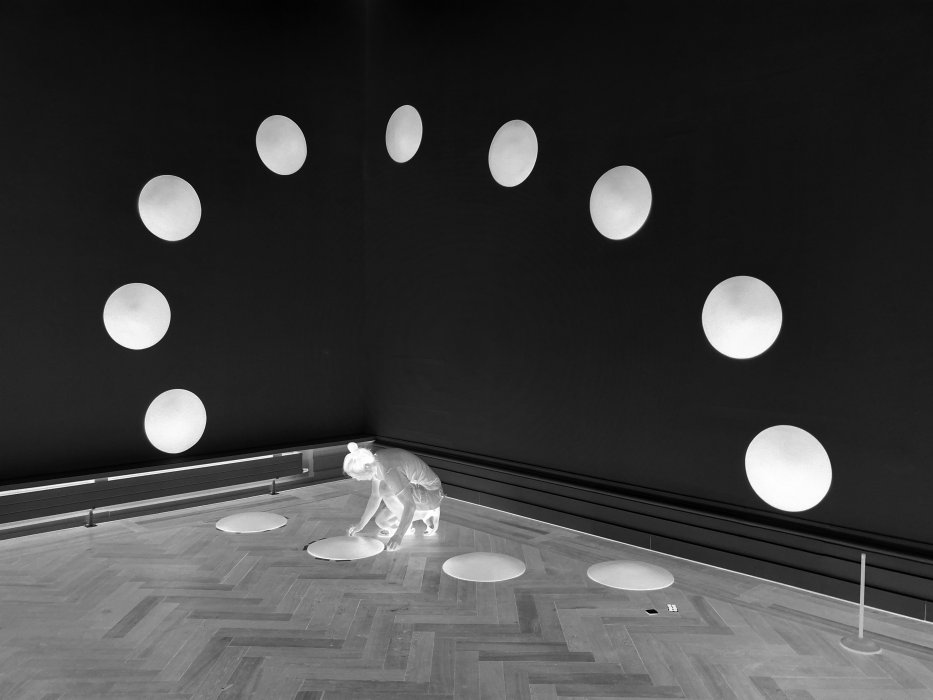







Hécate
The chaotic dust of the universe.... | Exhibition at Musée d'Art et d'Histoire Neuchâtel, CH | 17th September '22 - March '23
Scroll down for English…
La poussière chaotique de l'univers se serait condensée par des collisions provoquant des fusions et aurait formé les premières étoiles, la terre, la lune et les autres planètes. Les deux sphères du couple terre-lune valsent dans l’espace à un rythme régulier de manière héliocentrique. Le centre de gravité de ce binôme est désaxé et se situe dans la terre, ce qui provoque la trajectoire ovale.
Une fois en pleine lumière puis en pleine obscurité, la lune a toujours été source de projection créant un espace mythologique ou fictionnel, favorable aux narrations les plus folles. On a imaginé l’existence de « lunes noires » entendues comme un second satellite invisible de la terre ou comme l’ombre de la lune sur son tracé orbital. Dans la mythologie grecque, les phases changeantes de la lune sont attribuées à Hécate, la déesse protectrice, garante de la richesse, de la fertilité mais aussi de la mort.
Ce travail tend à fusionner le réel et l’imaginaire par une présence matérielle de treize disques bombés en grès noir polis, fixés au mur et disposés au sol sur un tracé ovale, comme s’il s’agissait de fragments de sphères de lunes noires.
Remerciements à la HEAD–Genève pour la mise à disposition des infrastructures.
The chaotic dust of the universe is thought to have condensed due to collisions generating fusions and so to have formed the first stars, the Earth, the Moon and the other planets. The two spheres of the Earth-Moon couple waltz in space in a regular heliocentric pattern. The gravity point of this duo is within the Earth but off-centre, causing the oval trajectory.
By turns fully lit and then once more in total darkness, the Moon has always been a source of projection, creating a poetic and mythological space. Through its monthly apparition and disappearance, going so far as to suggest the possible existence of "black moons" tracing the shadow of the real Moon on its orbital path, a fictional space permits the wildest of narratives. In Greek mythology, for example, the Moon’s changing phases are attributed to the protective goddess Hecate, associated with wealth and fertility as well as with death.
This piece aims to fuse the real and the imaginary by the material presence of thirteen convex discs in polished black stoneware, mounted on the wall or placed on the floor in an oval arrangement, as if they were fragments of black moon spheres.
Thanks to the HEAD-Geneva for the use of its facilities.